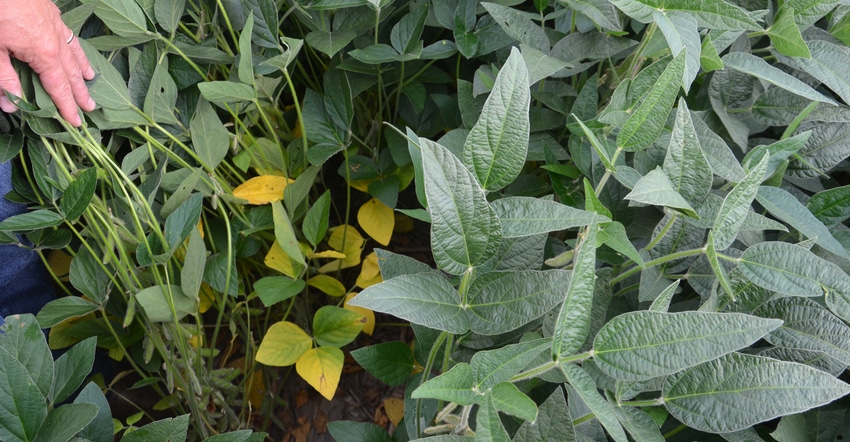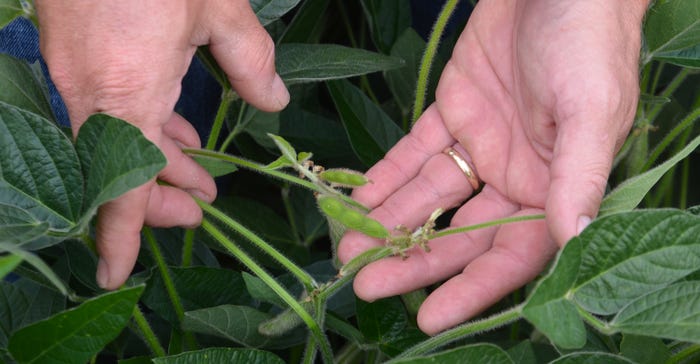
What will all your planning and hard work produce? Midseason is a great time to walk fields and get a feel for yield potential of this year’s crop.
“You don’t need a problem in the field as a reason to go walk and look,” says Steve Gauck, a regional agronomy manager with Beck’s, Greensburg, Ind. Beck’s sponsors Soybean Watch ’22.
Related: Get the most from late-planted soybeans
“It’s fun to walk into soybean fields when you haven’t been called out because something is wrong,” he says. “When you are out there in the field, you’re naturally going to look for diseases and insects, but it’s nice just to look and evaluate how well each variety is growing.
“Take time to assess overall plant health and see how well plants are branching and producing pods. High yield depends on a maximum number of nodes and pods per acre.”
Focus in the field
Here are specific areas to evaluate when scouting soybeans midseason:
Check plant health. “Pull back the canopy and see what’s underneath,” Gauck says. “By now, rows should be closed, even in 30-inch rows. In drilled or 15-inch-row beans, you will likely find some yellow leaves lower in the canopy. That’s normal. Lower leaves are no longer getting sunlight.”
Differentiate between normal yellowing and disease. Some fungal and bacterial diseases can also cause yellowing of leaves, Gauck says. However, if a disease is involved, leaves usually aren’t uniformly yellow. You likely will see splotches and spots on leaves.
One important disease, frogeye leaf spot, produces small, brownish lesions with a halo effect on green leaves. Frogeye leaf spot lesions form on leaves near the top of the plant first. Expect to see brown spots on lower leaves in the canopy.
Evaluate branching and number of nodes. How many plants have branches with a significant number of pods? More pods usually mean more yield. Expect plants in thinner stands to branch more frequently. Also, note how close together nodes are spaced on the main stem. Typically, a high percentage of yield comes from nodes up and down the center portion of the stem.

Examine upper portion of plants. If weather conditions are conducive to growth, plants should still produce new trifoliate leaves and pods near the top. With adequate rain during the critical reproductive phase, these become bonus bushels. If moisture is scarce, some pods, especially near the top of the plant, will likely abort, Gauck says.
Assess soil moisture conditions. Are plants currently in good condition, or is moisture short? Dig one or more plants and evaluate roots. Nitrogen-fixing bacteria within nodules usually stay active into the R5 stage. If bacteria are still active, nodules should be pink inside. If nodules are still active and moisture is adequate, there is a better chance plants will fill most pods with large beans.
About the Author(s)
You May Also Like




